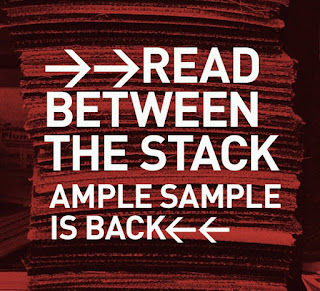Sampling that's faster, less expensive and less wasteful helps Shaw steal the show at HD.
 Pam Rainey has ink on her fingers.
Pam Rainey has ink on her fingers.
When the design manager set out to create the newest collection from Shaw Hospitality Group, she wanted to explore old-world, artisan, analog techniques of patternmaking. And she wanted to explore a lot of them.
Beginning with hours of printing using traditional woodblock methods, Rainey and her team also looked at vintage batik patterns, American Navajo rugs, and influences from around the world. The result was a cultural potpourri of designs, layered and richly textured, that make up the Global Reason collection.
Global Reason is adventurous, exotic, and above all, beautiful; a global tapestry of style that brings elegance to hospitality projects. Judges from the International Interior Design Association agreed, awarding the collection Hospitality Design Show’s Award of Excellence in the carpet category this year.
But to get from block printing to award-winning carpet was no easy feat, requiring the freedom to explore round after round of concepts, iterations and tweaks. The costs and time could have been prohibitively high, if not for Tryk sustainable samples.
“With budgets being tight these days, we try to save on sample costs,” said Rainey. “On a collection like Global Reason I will typically create twenty-one to twenty four patterns, which will be narrowed down to sixteen during product development.”
"Rainey used Tryk throughout the design process – in fact, during the entire development of the award-winning collection, Rainey’s team tufted only three physical samples, to confirm yarn colors. Everything else was Tryk."
 “Instead of having to run samples of these we use full-scale Tryk Swatches and Tryk room scenes during product development. The room scenes also help us check for pattern issues. In a collection like this, where the pattern repeats are twenty-four or forty-eight inches, there can be a lot of issues with the repeat – issues that don’t show up in 27 inch-wide samples.”
“Instead of having to run samples of these we use full-scale Tryk Swatches and Tryk room scenes during product development. The room scenes also help us check for pattern issues. In a collection like this, where the pattern repeats are twenty-four or forty-eight inches, there can be a lot of issues with the repeat – issues that don’t show up in 27 inch-wide samples.”
Rainey used Tryk throughout the design process – in fact, during the entire development of the award-winning collection, Rainey’s team tufted only three physical samples, to confirm yarn colors. Everything else was Tryk.
 The collection was designed for a multi-level cut loop machine, which produces one of the most expensive samples in the industry. Rainey was able to explore options in freedom, without concern for unnecessary costs because the cost of Tryk printed simulations was drastically lower than physical samples. And because she did not have to wait for samples to be run, she was also able to develop her ideas much more quickly.
The collection was designed for a multi-level cut loop machine, which produces one of the most expensive samples in the industry. Rainey was able to explore options in freedom, without concern for unnecessary costs because the cost of Tryk printed simulations was drastically lower than physical samples. And because she did not have to wait for samples to be run, she was also able to develop her ideas much more quickly.
“Tryk simulations also helped when I was showing ideas to manufacturing, sales and marketing – they are an easy way to flip through a lot of different samples,” she added.
And, of course, the use of Tryk also served Shaw’s well-known commitment to environmental responsibility. Global Reason, manufactured with Eco Solution Q nylon, is designed as a Cradle-to-Cradle product, certified by McDonough Braungart Design Chemistry. The carpet is completely recyclable, containing 45% pre-consumer recycled content. Recycled content is based on allocated nylon fiber from Shaw's total nylon fiber production and determined as a percent of total Eco Solution Q output. Actual recycled content in this product will likely vary. They are also Green Label Plus Certified and contribute to the LEED point rating system for recycled content, low-emitting materials and innovation in design. So it only makes sense that their development was undertaken with minimizing waste in the design process.
“This is one of the happy side benefits of Tryk,” said Rainey. “Not only can we run Tryk simulations without using fiber or contributing to landfill, but we can run extras for labeling, sales tools, visual references for graphic artists which set up the marketing materials, or visual references for the manufacturing floor.”
 A project that began with blockprint patterns of ink on paper, used ink on paper samples to develop the patterns all of the way up to the actual production runs. A carpet collection that invites designers to wander the world – soaking in the rhythms and flavors of a globally diverse marketplace – saved time, sampling costs, and reduced unnecessary waste all along its journey to market.
A project that began with blockprint patterns of ink on paper, used ink on paper samples to develop the patterns all of the way up to the actual production runs. A carpet collection that invites designers to wander the world – soaking in the rhythms and flavors of a globally diverse marketplace – saved time, sampling costs, and reduced unnecessary waste all along its journey to market.

 Pam Rainey has ink on her fingers.
Pam Rainey has ink on her fingers.









